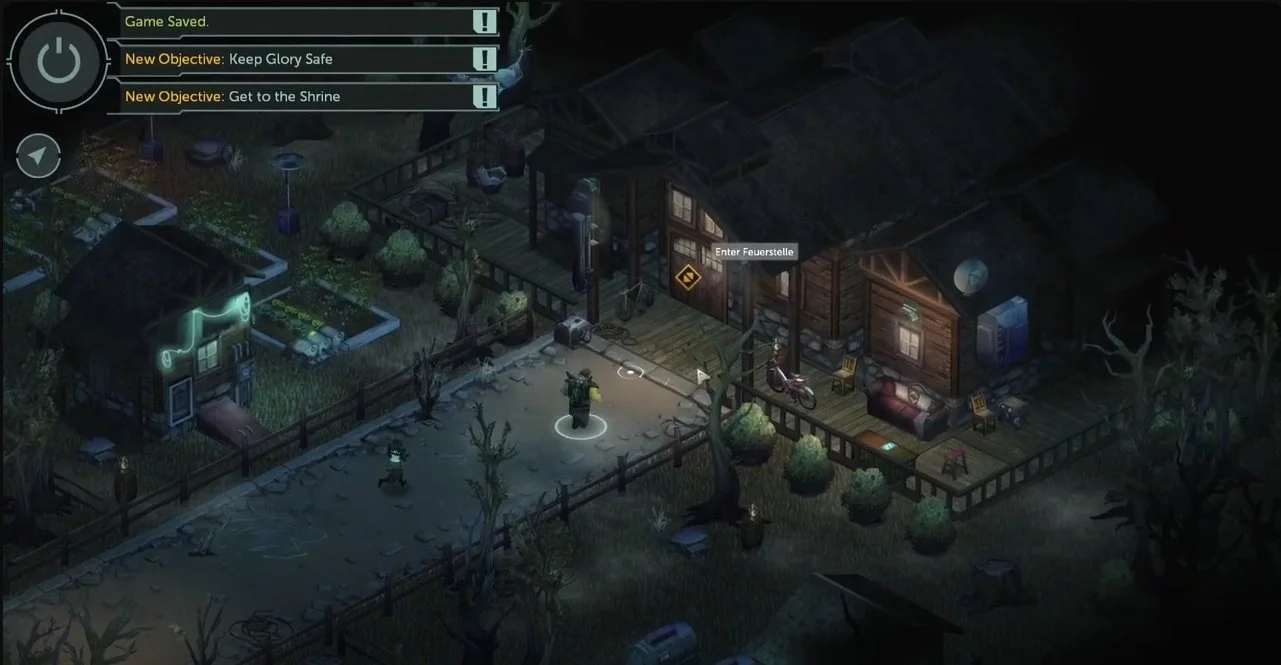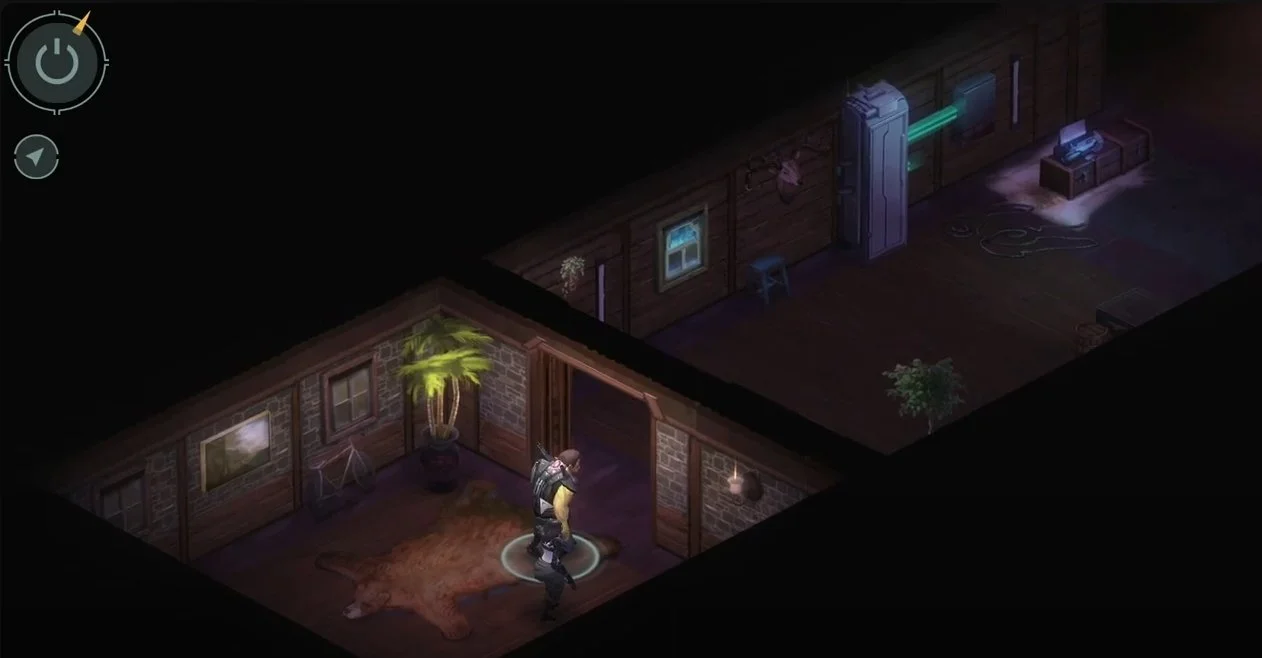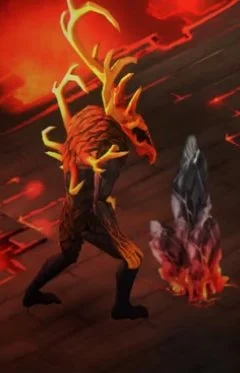Key Iteration
It was not a hard decision to include “Feuerstelle” as work I wanted to highlight; I believe it to be a bit special. We spend time in the industry looking at past failures and when in development risks to our success. At the risk of sounding a bit like an overdone mission statement. I think it is important to run towards success and not just away from failure. To do that it's important to know what worked and why.
Below are some lessons and turning points in development that contributed to this quest meeting its full potential.
“You gotta bleed a little while you sing
Lest the words don't mean nothing, no”
-The Cult “Heart of Soul
Getting Emotional
Clear communication, careful planning, successful processes, and proper organization are excellent things that can make the difference between success and failure in games.
But if you want to make something that emotionally and memorably resonates with players, especially for narratively focused games, there needs to be space for human emotion in the process of its creation.
Looking back on what I felt and communicated to the team in the initial parts of kicking off this quest the more I realized how valuable it is to communicate that there is a path to make something special. I think it is passion combined with focus that built one of the most rewarding virtuous circles in my career. The first two things to come in during blockout and early iteration was the exterior art pass and music.
The initial block for the exterior was just a hallway of blocks but Andrew (main writer for Dragonfall) and I were able to tell the environment artist (the now acclaimed indie cinematographer Ravenna (Jenn) Tran) that we wanted the feeling that was mostly welcoming but with something unsettling creeping at the fringes. When that came back from being a hallway of blocks my reaction was something like “Holy shit, Andrew (we sat next to each other) it's Feurestelle, the tone is pitch perfect. Jenn killed it, me must find go find her and tell her how much she has killed it.”
Next was “Horn and Ivory” Glory’s theme by the award-winning composer John Everest. Andrew and I set John up with the central themes of what we were doing and why and I underlined that we were on to something special with this one.
As soon as that track was in the repo my excitement about what we were doing just increased. I got everyone else to check out Jenn and John’s early work and weathervane into where we were going and why. I asked them to listen to the music, checking out the exterior scene and just soak in the vibe.
After that the fuse was fully lit each new piece of work continued to build on the excitement. We got the interior and the Realm of The Adversary tile sets in from Joel Duque and the characters in from Maury Wiess (including The Heart). I was beside myself as this these elements came in and made sure the people who did the work and team at large knew that fantastic work was being done.
Getting a Boss Fight Right
Watching everything come together the way it did on the quest showed me the importance of making meaningful contributions to something greater than ourselves, being seen, bringing something that brings joy and fun into the world. These are things that really can lead to making something special.
For my part, I saw the value in being passionate about the work, showing joy and having appreciation of the work of experts in pursuit of a common goal. They say you should believe it when you see it but there is a lot to be said for believing it before you see it.
"Lagom är bäst", "The right amount is best."
-Swedish proverb
As the designer that owned AI for the Director’s Cut, I set out with the goal to combine my quest and AI design skills in some new and exciting ways and really push what a boss fight could be in a Shadowrun game.
I hit on early that I wanted to use the trope of the fake copies of an enemy and then have Harrow play the role of a buffer. In point of fact, I was not too terribly excited about using these well-worn mechanical tropes and wanted to break more ground than that. I did not have any strong additional ideas about what would fit well with the quest overall and have manageable implementation challenges. I decided to push on to get things rolling and left the door open to add more after I got the initial mechanics in and balanced.
What sounded maybe a bit too plain in doc form played well right off the bat in the overall context of the quest. The mechanics do take some puzzling but are solvable. Once solved, decent combat tactics will see you through to victory. For a time, I tried to push things in new and different ways but this led to either communication challenges with the mechanics or caused the fight to drag on.
In the Shadowrun games, and many games where combat and moment to moment gameplay are not the primary focus, combat can overstay its welcome. A boss with a few too many hit points or just another wave or two of enemies can very quickly turn a fun fight into something tiring. My final tuning and implementation was a well-polished version of my original idea. It had novelty and flash but kept up the momentum of the overall quest.
It’s good to be excited to push boundaries but that needs to be weighed against the larger overall goals. If a design element in a quest is contributing strongly to its goals, there is no need to overcomplicate things.
“Last table. Last plate just as good as the first, finish strong yeah?”
-Gordon Ramsey
Sticking the Landing
While the quest was focused, it wasn’t easy. After bagging the final fight, we could have stopped there. I and the team in general were getting a bit burnt out on this quest. We could have done the final beat just in dialogue and finished the quest right after the boss fight. We did, however, do a lot of work in the quest to get you to think about and commit to your decision of how to end the quest and it had to be emotionally satisfying when it finally came.
In particular, ending Harrow in a dedicated beat, on the vengeance path after the boss fight was the right call. Glory had to have her moment of reckoning with him and it needed its own space.
Getting this right turned out to be a bit more of a struggle than we thought. Originally, I tried an actual fight, rather than a vignette. This really did not work as we had done the big finish and another fight after such a big one felt more exhausting than exciting. The Shadowrun editor however does not do “vignettes” per se, in point of fact it was particularly bad at doing this sort of thing. We had pushed back multiple times on directors to not attempt this sort of thing because of the lack of support in our tools. After trying different combat beats, I realized it was time to do the thing we said we would never do.
To accomplish it I had to work with engineers on some custom solutions and it was also pretty expensive in terms of design time as well. What’s happening under the hood is the game is actually playing itself in turn based mode and a string of events and timers is being used to sequence it all.
Thankfully, on the healing path, a quick run through the burning wreckage to find and rescue the young Initiates was more straightforward.
It was tempting on the home stretch to not take on unique and new challenges, but players play the whole quest, not just the parts with the most investment and I wanted to see it through to its full potential to the very end.
A Quick Thank You
I hope this tour of highlights on this site has provided you with the opportunity to understand my strengths and passion and some of what I’ve learned along the way. Thanks for the opportunity to reflect and apply to join Orion.







